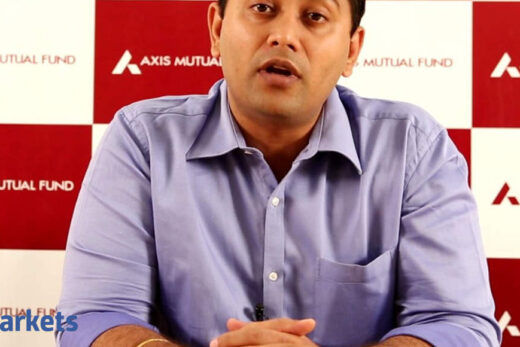I was looking at some of the portfolio positions in your model portfolio. Let us start by understanding your thoughts on the capital goods space. If indeed we are in a capex cycle, this particular sector cannot be far behind. What is your positioning in deep cyclicals?
Yes, after almost 10 years, three to four months ago, we started seeing the first signs of revival in capital expenditure. We are about six months early in this whole expectation. We think it will be FY23 and FY 24 when it will play out but we think it is good to pre-empt it because it is a capex cycle after almost 10 years. So, there is a lot of earnings upgrade potential that we see.
A lot of these companies have seen almost anaemic, negligible top line growth over the last 10 years. Margins have halved, asset returns have almost halved again and return on capital and return on equities have literally gone to single digit. We see various reasons why many of these things should improve. It is not a short-term call, though markets are pricing in everything early. But we think it will play out in the medium term of 18 to 24 months.
We are seeing a lot of confidence and so we have gone overweight on industrials as an overall sector. There are various sub-sectors which are there. These are industrial consumables, capital goods companies and construction companies. There are even real estate proxies, building materials and housing finance companies. So when I am looking at capex, I am looking at pretty much the entire basket which is household capital expenditure into real estate, industrial or corporate capex in both core sectors like cement, steel, renewables or oil and gas. We should also see all the PLI related capital expenditure.
We are also seeing it in the global context. After almost 10 years, engineering exports are beginning to pick up even in the June quarter. Recent data points out that exports is picking up. Needless to say, the March quarter was very good but clearly the one big change in our whole model portfolio over the last maybe four-five months has been the capital expenditure. I do not want to exclude the government’s infrastructure spend, the capex there being another important driver. We think there is a very good investment theme emerging there which is making us feel excited.
A couple of days back we talked to Gokaldas Exports. They said they feel the need for raising their capacity and so were some other companies like SP Apparels on the garment side. When we speak to auto ancillary companies or engineering exporting companies RK Forgings, Minda, we get the same. Raymond was also saying that their orders are going up. Do you think it is structural? What kind of a basket would you make of these exporters?
It is cyclical. It is not structural but the cycles can be even three years long. So we need to see whether it will be for one year or three years. We do not know but we can more reasonably say that there is an up cycle and that is something that will necessarily make us want to be a part of it. It could last three years. That is how we are approaching it, capacity utilisations being the likely drivers.
We watch a whole host of data and that gives us confidence that this can be a three-year cycle. But there can be many pitfalls along the route. As of now, we are looking at it as a three-year cycle. Very healthy returns can be made in all these sub-segments as well.
What are both sides of your client group — FIIs and DIIs — saying? Even on the earnings front, 12 to 24 months far out, how much of that earnings growth is already in the price?
When it comes to earnings, we need to look at two things. One is what is the likely growth driver that is the demand driver and the liquidity in the banking system. When I mean liquidity in the banking system, I am looking at bank balances accumulating the savings and current accounts. Also, the excess statutory liquidity reserve requirements which are more than mandatory requirements that banks have. The system is sitting on excess liquidity. Today’s savings is tomorrow’s consumption and the day after tomorrow’s investment.
From an earnings perspective, the top line matters a lot but another important driver is the industry consolidation which has happened. Over the last three to four years, in about 20 different sub-segments – telecom, aviation, real estate, cement, steel, power and general insurance. I can name 20 sub-segments, where we have seen the top few players disproportionately gaining market share within the organised and then from unorganised to organised. This gives pricing power when inflation rises, when commodity price inflation comes in and what is happening today is we will see companies take pricing action.
Now commodities went up 50% in the last 12 months. Companies cannot take such a strong price hike but they will take it piecemeal. They do not want to hurt demand. Demand is fledgling and so they will take action the way car companies are taking their fourth price hike in the last six to nine months.
When commodity prices come off a bit, you will see that companies are not taking price cuts and that is when margins expand. So we will see a combination of top line recovery and earnings drivers in the form of price hikes and when those two happen, top line growth is strong. Operating costs do not grow as much because it is already coming off a pretty reasonably high base. It is a pyramid shaped kind of an earnings growth and deleveraging of lower interest rates. All these will help the overall earnings trajectory. Our confidence in earnings is strong enough and that will take the next 12-18-24 months. It is only when that confidence comes that managements will want to increase capacity.



